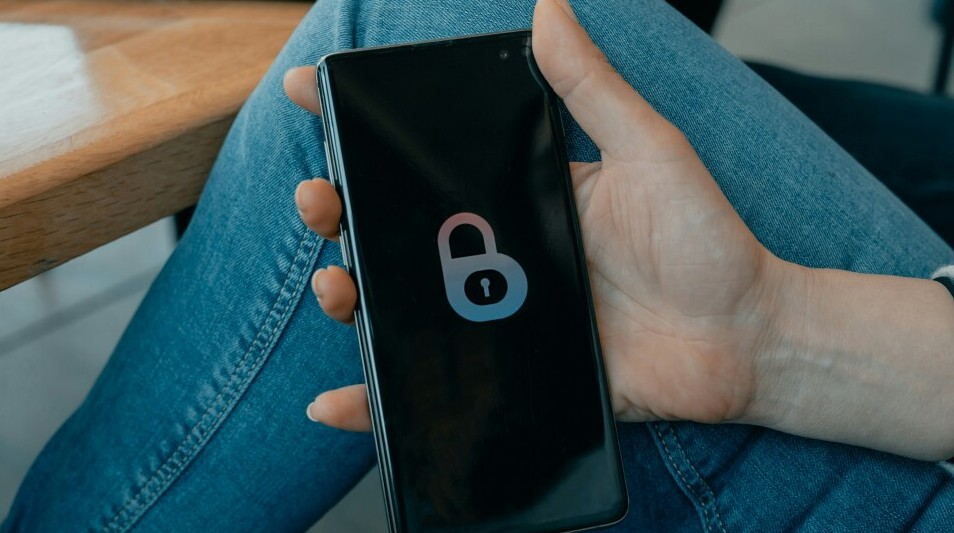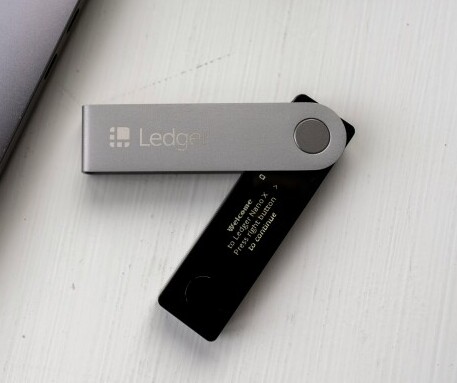Understanding The Difference Between Crypto Cold Wallets And Hot Wallets
Cryptocurrency is all about digital ownership and transactions happening on a blockchain, and just like you need a physical wallet for your cash, you need a digital wallet for your cryptocurrencies. But here’s the catch, these wallets don’t actually store your crypto. They store something called private keys, which are like the passwords you need to access your cryptocurrencies.

Think of wallets as management tools for your digital assets. They help you manage the transaction process and prove ownership of your coins on the blockchain. It’s a bit like having a password manager app that keeps all your passwords safe and helps you log in easily to your online accounts.
When you dive into the world of crypto wallets, there’s a lot to consider. Hot wallets and cold wallets are the two main types. Understanding the difference between them is crucial for keeping your assets safe. While they both aim to secure your crypto, they do it in their own unique ways, each with its own flavour of benefits and risks.
So, whether you’re planning to trade frequently or hold onto your assets for the long haul, knowing how these wallets work is key. It’s about finding the balance between accessibility and security, a decision that plays a pivotal role in your crypto journey.
Exploring Hot Wallets: Convenience at the Cost of Security?
Hot wallets are your go-to for quick and easy access to cryptocurrency. They’re always online, making them perfect for those who trade or transact frequently. Whether it’s a software-based one like an app on your phone or a web-based one hosted by exchanges, these wallets keep you in the game with minimal fuss.
One of the biggest perks is their accessibility. You’re always just a few clicks away from your funds. They come with intuitive interfaces that even a new crypto user can navigate comfortably. This makes them incredibly user-friendly and efficient for both beginners and seasoned traders.
Hot wallets like MetaMask, Exodus, and Phantom are popular because they integrate seamlessly with various exchanges and platforms. This integration makes them ideal for quick trades and transactions. Speed is a huge bonus here; transactions happen in a flash, which is vital when the market moves fast.
However, being constantly connected to the internet means they come with risks. Security vulnerabilities, such as hacks and phishing scams, are more of a concern because of their online nature. Plus, if your wallet is linked to an exchange, you’re also reliant on that exchange’s security measures. Any breach there, and your funds could be at risk.
Hot wallets are great for storing small amounts of cryptocurrency you need for daily transactions. But keeping your life savings in one? Probably not the best idea. They’re super handy and ultra-convenient but a touch less secure than their cold wallet counterparts. Use them wisely and keep your bigger stash somewhere more secure.
Delving into Cold Wallets: Prioritizing Security for Long-Term Holdings
Cold wallets are like the security vaults of the crypto world. They’re all about keeping your assets safe and sound offline, away from the prying eyes of potential hackers. If security is your main priority, cold wallets are the way to go.
These wallets fall into two main categories: hardware wallets and metal wallets. Hardware wallets, like Ledger and Ellipal, are physical devices that store your private keys without ever connecting to the internet. Metal wallets, on the other hand, help keep your recovery phrases safe, safeguarding them against physical damage.
The standout benefit of cold wallets is their enhanced security. Since they operate offline, they’re immune to online threats like hacks and phishing attacks. This makes them an excellent choice for long-term storage of significant crypto holdings.
However, with great security comes the challenge of accessibility. Accessing your funds means connecting the wallet to a device with internet access, which takes a bit more time and effort. This might not be appealing if you’re all about active trading.
There’s also the physical aspect to consider. Losing a hardware wallet or having it stolen can lead to loss of funds if you don’t have a backup. It’s crucial to keep your recovery phrases safe and sound, maybe locked away in a safe, just in case.
Cold wallets are ideal for those holding large amounts of crypto with no intention of frequent transactions. They’re all about long-term security, offering peace of mind that your assets are locked away from the unpredictable world of online threats.
Security vs. Usability: Choosing the Right Crypto Wallet for Your Needs
Deciding between hot and cold wallets comes down to balancing security against usability. The choice depends largely on how often you plan to access and trade your assets.

Hot wallets take the crown for usability. They’re perfect for those who need quick access to their funds and want the ability to make transactions on the fly. If you’re actively trading or making frequent purchases, these wallets offer the convenience you need without slowing you down.
However, hot wallets trade some level of security for that accessibility. Being online, they’re always at risk for digital threats, so it’s generally recommended to keep only the amount you need for day-to-day activities in them.
On the flip side, cold wallets are all about security. They’re best for holding large amounts of crypto safely over a long period. If minimizing risk is your main focus, especially for substantial holdings, cold wallets provide that extra layer of protection against online vulnerabilities.
That said, the security does come with some drawbacks in usability. Accessing funds stored in a cold wallet requires planning and a few extra steps, which might feel like too much hassle for those wanting instant access.
Sure, hot wallets are generally free, and cold wallets come with a cost for the device itself, but think of it as an investment in security. For many, the peace of mind that comes with a cold wallet’s superior protection is worth the upfront expense.
Many crypto enthusiasts use a combination of both types, storing the bulk of their crypto in a cold wallet for peace of mind, while keeping smaller amounts in a hot wallet for quick transactions. Ultimately, the choice boils down to your personal needs, trading habits, and risk tolerance.
FAQs about Crypto Wallet Usage and Best Practices
- Understanding the fundamental differences between hot and cold wallets is crucial for any crypto enthusiast. While hot wallets offer quick access and ease of use, cold wallets provide robust security for long-term storage.
- You might wonder if you can use both types simultaneously. Absolutely! Many users store large amounts securely in a cold wallet and keep a small amount in a hot wallet for daily transactions. It’s all about finding what works best for you.
- A common question concerns the myth of cold wallets being completely hack-proof. While they’re incredibly secure against online threats, they’re not entirely immune to physical loss or damage. Keep your recovery phrases safe to reduce risks.
- Deciding how often to move funds from a hot wallet to a cold one depends on your trading habits and security preferences. If you frequently acquire new assets, periodically transferring profits or significant amounts to a cold wallet enhances security.
- Losing a cold wallet can feel catastrophic, but all isn’t lost if you have your recovery phrase. This backup is crucial, as it helps you regain access to your funds. Always store it securely to prevent any future mishaps.
Find the right Ledger hardware wallet for you…
The information provided in this blog is for educational and informational purposes only. Cryptocurrency is highly volatile and carries substantial risks. Nothing within this blog constitutes financial advice. We strongly encourage you to conduct your own research (DYOR) and consult with a qualified financial advisor before making any investment decisions. Always invest wisely, and never invest more than you can afford to lose.














4 Responses
Great breakdown of the pros and cons of hot and cold wallets! I appreciate how you’ve clearly laid out the key differences, especially for people who might be new to crypto. Personally, I think it’s all about finding that right balance between security and accessibility. Like you mentioned, keeping a bulk of assets in a cold wallet gives you peace of mind, while hot wallets are perfect for quick transactions. I’ve found that using a combination of both works really well for me. It’s a bit like having a checking account for daily use and a savings account for longer-term safety.
And you’re right, people often underestimate the importance of protecting recovery phrases. Losing a hardware wallet can be a nightmare, but having that backup phrase stored securely is a game-changer. It’s like an insurance policy for your crypto! Thanks for the thorough explanation. I really enjoyed reading it!
Thank you so much for your review! I am glad to hear that you found the breakdown of hot and cold wallets helpful, especially for those who are new to the world of cryptocurrency. Your analogy of balancing a checking account for daily transactions with a savings account for long-term security is spot on. It perfectly illustrates how using both types of wallets can enhance both accessibility and safety.
I completely agree that the importance of safeguarding recovery phrases cannot be overstated. It’s often the overlooked aspect that can save someone from potential disaster. Treating that backup phrase as an insurance policy is a wise approach, and I appreciate you highlighting that critical point.
It’s great to know that you are actively using a combination of wallets in your own practice. Sharing experiences like yours can really help others understand the best strategies for managing their assets. Thank you again for your kind words and for engaging with the content so thoughtfully—this kind of feedback motivates me to keep sharing valuable information!
Hey Crypto Believer,
First off, great job on explaining crypto wallets so clearly! Your blog post, “Understanding The Difference Between Crypto Cold Wallets And Hot Wallets,” takes a tricky topic and makes it easy to understand. It’s not often that we see such a good explanation of both hot and cold wallets, a subject that can even confuse experienced crypto users.
Your comparison makes it simple to tell the difference between the two. Describing hot wallets as being like an easy-to-access password manager and cold wallets like a super-secure vault really helps to understand how they work and how they’re different.
I found the part about the trade-offs between accessibility and security really useful. It helps people, whether they’re trading often or just holding onto their crypto for a long time, think about the risks and how convenient each option is. This is a big topic in the crypto world, and you explained it in a way that’s both helpful and easy to follow.
You also included some great tips on how to manage and secure these wallets, which readers can use right away. By keeping the technical terms simple, you’ve made the whole thing easier to understand, helping people make better choices about their crypto.
Overall, your post is more than just helpful advice – it gives people the confidence to make smarter decisions with their crypto. It was a great read, and it makes a real difference. Well done!
All the Best,
Eric
Hi fellow Crypto enthusiast,
Thank you so much for your review! I’m thrilled to hear that you found the blog post clear and informative. It’s always rewarding to know that complex topics like cryptocurrency can be simplified for readers, regardless of their experience level.
I appreciate your analogy of hot wallets to a password manager and cold wallets to a secure vault. This comparison is crucial for helping readers visualise the fundamental differences in accessibility and security between the two. It’s essential for users to understand that while hot wallets provide convenience for frequent trading, they also come with higher risks. Conversely, cold wallets offer a safer option for long-term storage, which is vital for anyone looking to hold onto their assets.
Your feedback on the discussion of trade-offs is particularly encouraging. It’s a significant consideration in the crypto space, and I aimed to highlight how different users can choose based on their needs—whether they are active traders or long-term holders. Understanding these trade-offs can lead to more informed decisions, which is always the goal.
I’m also glad you found the tips on managing and securing wallets practical. Simplifying technical jargon was a priority, as I believe that knowledge should be accessible to everyone, enabling them to take control of their crypto investments.
Thank you once again for your kind words. It’s feedback like yours that motivates me to continue providing valuable content. I hope that my post empowers readers to navigate the crypto landscape with confidence and makes a positive impact on their decision-making. Looking forward to hearing more of your thoughts in the future!
Warmest regards
Nikki